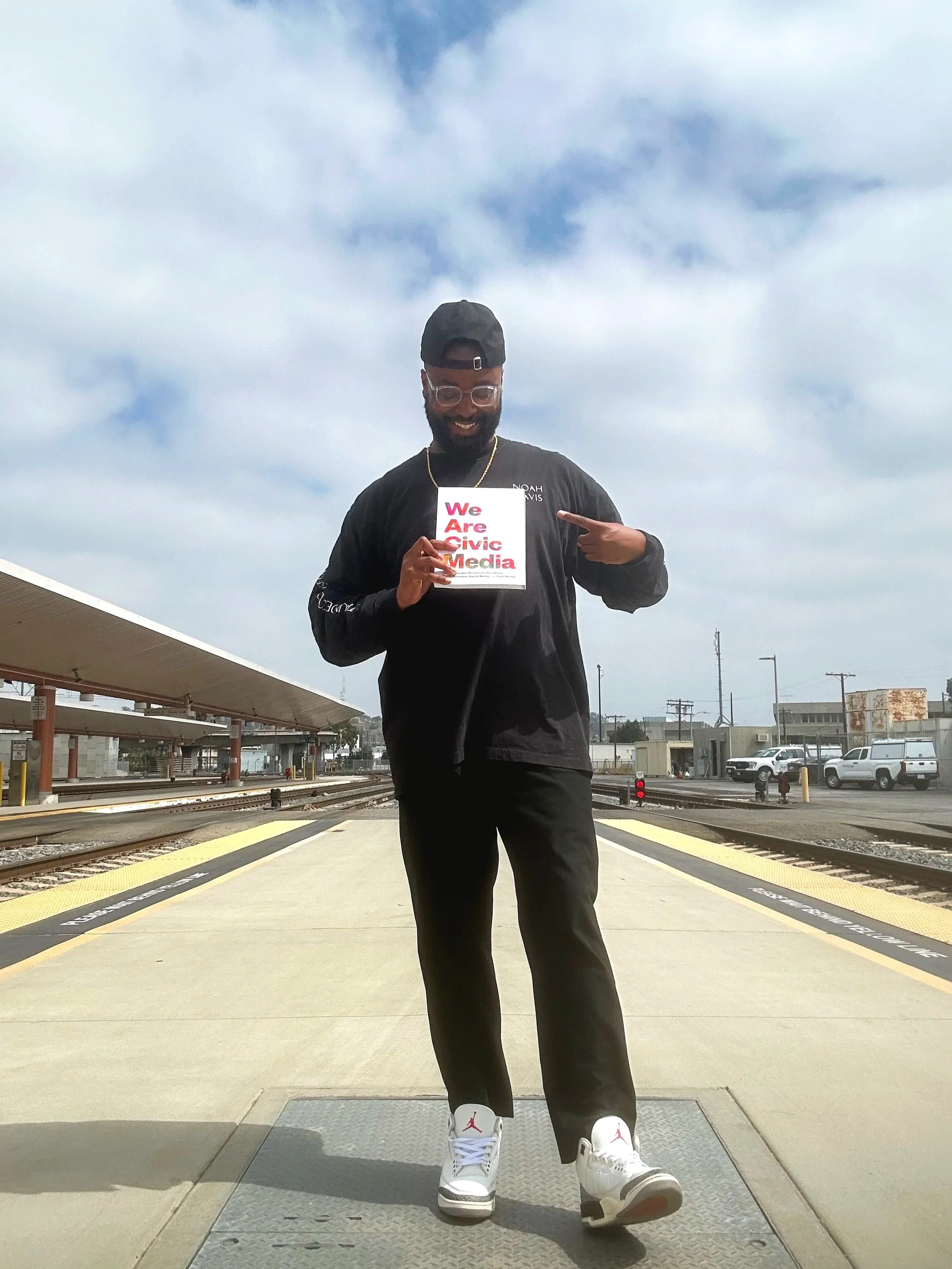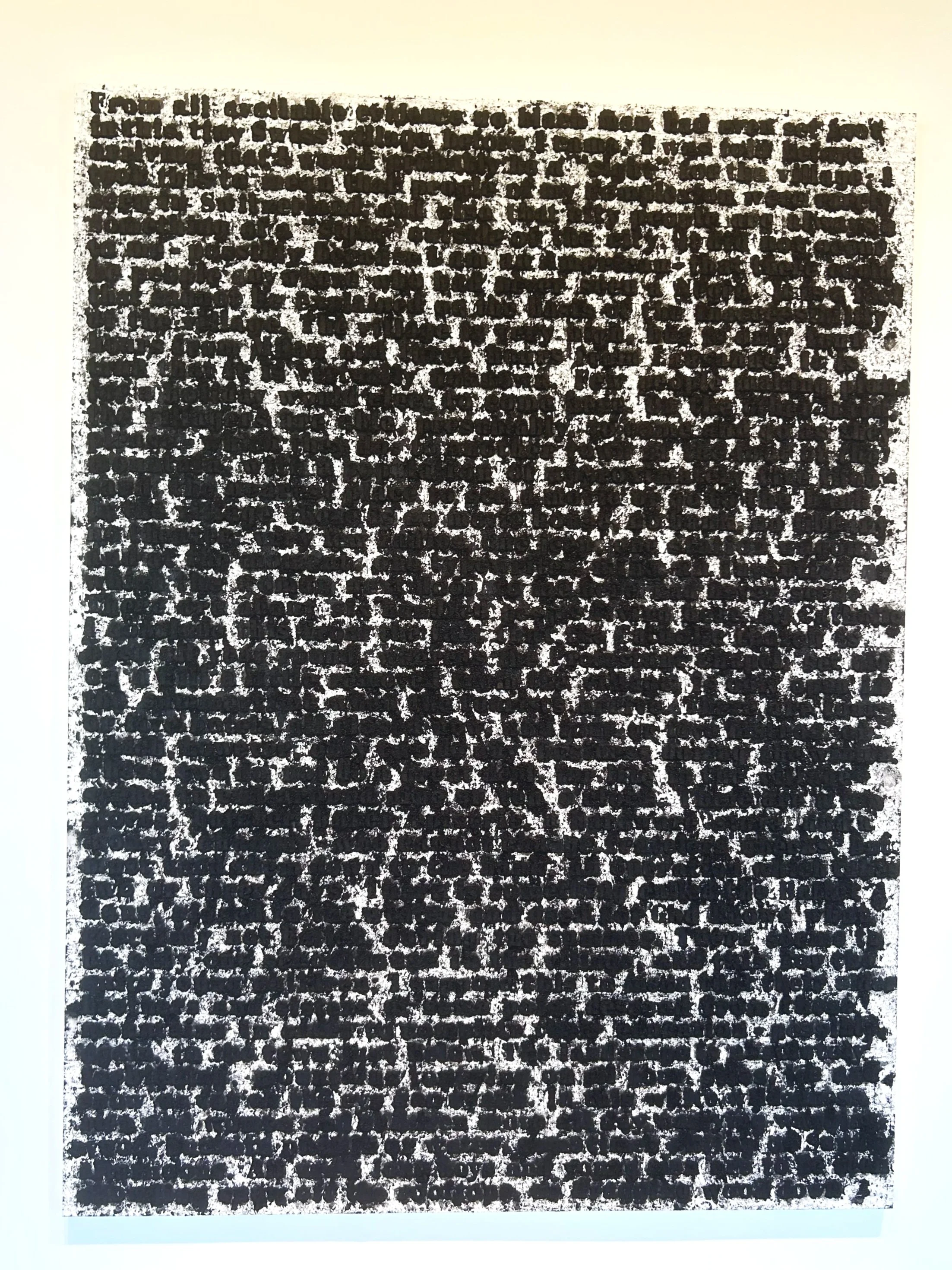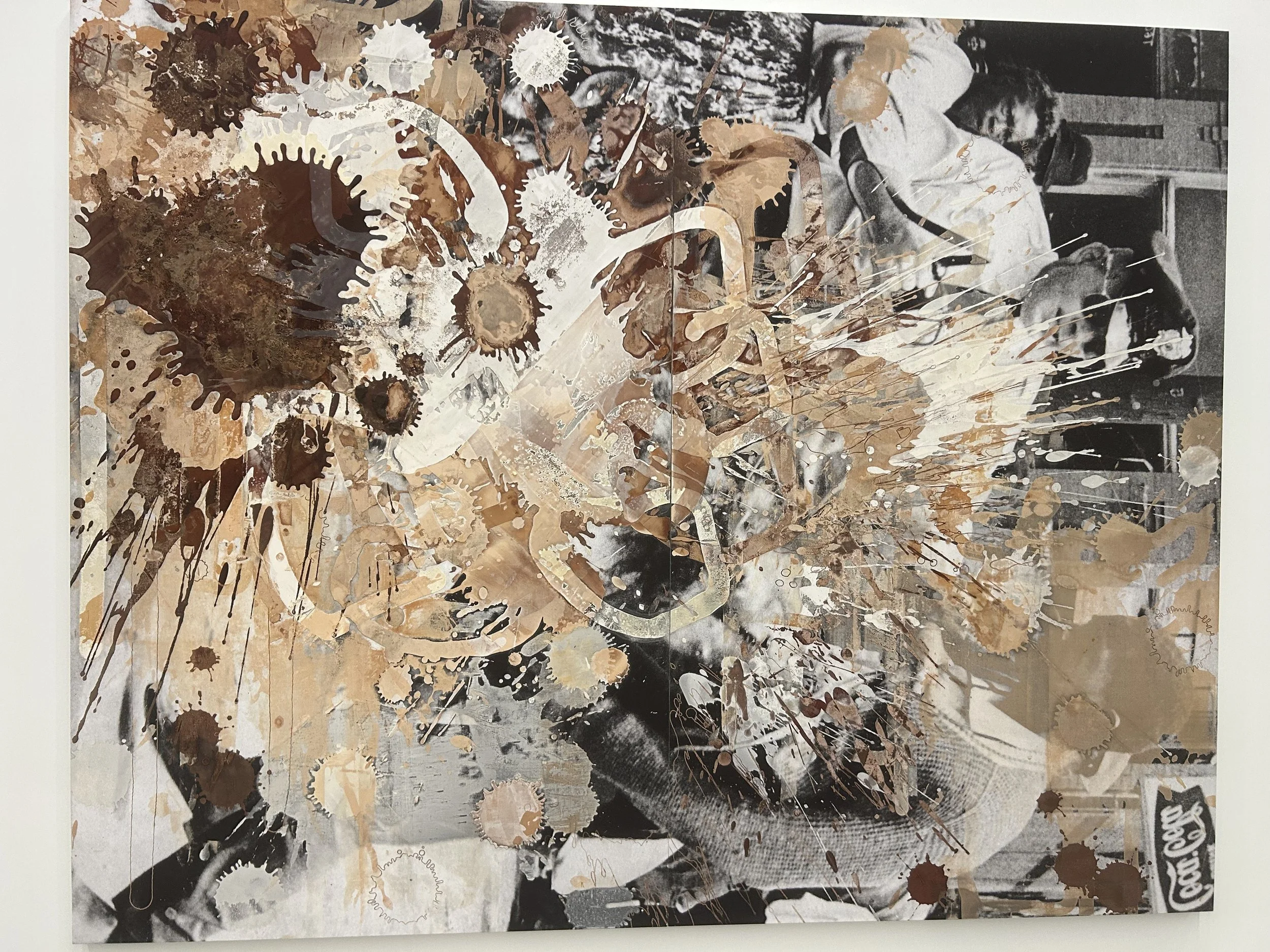NOMMO’s Tyree Boyd-Pates on Civic Media, Black History, Museums, and Communicating Afrofuturist Imaginings.
Today marks an exciting milestone for NOMMO Cultural Strategies: our founder, Tyree Boyd-Pates, is a featured contributor in We Are Civic Media: The Book, published by Northwestern University Press.
This groundbreaking volume serves as a collective manifesto for the field of civic media, one that refuses to separate the deeply personal from the political, the individual from the structural. Through twenty-three essays, reflections, and lived experiences, the book honors the practitioners, educators, cultural leaders, and community members who are shaping civic media as both a practice and a philosophy.
Tyree’s contribution reflects his lifelong commitment to uplifting Black narratives through an African-centered lens. As a multidisciplinary historian and cultural archaeologist, Tyree’s work interrogates how archives, museums, and public history can be reimagined as platforms for liberation spaces where the histories of the African Diaspora are not only preserved but celebrated. His chapter in We Are Civic Media explores how cultural strategy, curatorial practice, and storytelling can serve as civic infrastructure, empowering communities to see themselves as both the narrators and architects of their futures.
“Civic media is not just about content, it’s about context, connection, and community. It’s about making history a living, breathing force for liberation,” Tyree reflects.
From his early engagement with the African Diaspora in South Africa to his curatorial leadership in major museums, Tyree has consistently pushed for institutions to center the lived realities of marginalized people. His founding of NOMMO Cultural Strategies and Freedom School Online further extends this mission, bridging art, education, and activism to create cultural narratives that resonate globally.
We’re thrilled to see Tyree’s voice alongside other visionary thinkers in this important work. We Are Civic Media is more than a book, it’s an invitation to enter the world of civic media, discover its many pathways, and connect with the people shaping it.
Get your copy: Visit We Are Civic Media and use discount code CIVICMEDIA for 25% off at the Northwestern University Press website.
Exploring Black Life and African American Art at the Marciano Art Foundation in Los Angeles
During a recent visit, NOMMO explored the Marciano Art Foundation on Wilshire Boulevard in Los Angeles, CA. Once a grand Masonic Temple, this historic landmark now thrives as a vibrant museum, inviting the public to engage with its extensive collection and immersive exhibitions.
In alignment with NOMMO’s mission to illuminate African American art, history, and culture, the Marciano highlights works by celebrated artists such as David Hammons, Mark Bradford, Glenn Ligon, and Deana Lawson, whose portrayals of Black life demand recognition and reverence. The collection also includes works by artists like Kelley Walker, whose Black Star Press reflects on Black life and the civil rights movement, showing how media and representation continue to shape historical understanding.
Glenn Ligon — Stranger #78
At the Marciano, Glenn Ligon’s #78, made with coal dust, offers a powerful exploration of political differences and ideas of belonging, highlighting his use of this material as both a favorite and a metaphor. This series, inspired by James Baldwin’s 1953 essay “Stranger in the Village,” which he began in 1997, features stencil passages on canvas covered with coal dust and glue until the words nearly disappear. The dark surface makes the text almost unreadable, physically embodying Baldwin’s central question: Who, in the end, is the stranger? This work hits the viewer where they stand.
David Hammons — Untitled Works
David Hammons: Untitled, 2010. Acrylic on canvas and tarp, 103 x 80 inches.
On view at the Marciano, viewers can see that the enigmatic David Hammons commands a powerful presence within the galleries. Whether it's the monumental Untitled (2010), a canvas-and-tarp piece dominating a second-floor wall, or the striking Untitled (2007) fur coat embedded with acrylic and spray paint, Hammons’s works resist simple classification. They function on both personal and collective levels, encouraging viewers to reflect on the connections between the artist’s inner world and the real-life experiences of Black Americans.
David Hammons: Untitled, 2007. Fur coat with acrylic and spray paint.
Deana Lawson — Afriye
Deanna Lawson, Afriye: ,2023. pigment print.
Difficult to neatly classify, Deana Lawson’s work at the Marciano’s second-floor galleries straddles photographic tradition and social collaboration. Afriye (2023) places as much emphasis on Lawson’s intimate exchange with her subjects as on the resulting image. Its mirrored frame amplifies the gaze of the two figures while reflecting our image, making us participants in the act of looking.
This interplay recalls Diego Velázquez’s iconic Las Meninas (1656), which also stages a complex relationship between artist, subject, and audience through a mirror. By extending this self-reflexive gesture into a contemporary and deeply personal context, Lawson transforms Afriye into a temporal bridge—connecting private Black spaces to a broader lineage of image-making and creating a powerful arena for self-definition.
Mark Bradford — Building “The Big White Whale”
On display at the Marciano, Building “The Big White Whale” (2012), Mark Bradford employs his signature collage technique, layering found paper, string, paint, and urban ephemera to create a monumental surface that feels both architectural and oceanic.
The title alludes to Herman Melville’s Moby-Dick, turning the “whale” into a metaphor for vast, often unseen systems, social, economic, and racial, that influence and shape our lives. From a distance, the piece appears as pure abstraction; up close, it reveals fragments of advertisements, merchant posters, and weathered street materials, illustrating the layered histories embedded in the urban landscape. Bradford’s work combines literary allusions, personal memories, and collective history into a single, compelling statement.
Artists Engaging Black Histories
Kelley Walker — Black Star Press
Kelly Walker, Black Star Press (2006). Digital print
While not a Black artist, Kelley Walker’s Black Star Press (2006) revisits Charles Moore’s 1962 photo essay documenting civil rights protests in Alabama. Walker digitally reprints these photographs and overlays them with silkscreened chocolate, creating painterly gestures that obscure and amplify the violence depicted. The work reflects on how media circulate images of Black struggle and how the meaning of those images evolves across time and context.
Field Note reflection —
The Marciano Art Foundation’s presentation of these works offers a rare, concentrated space in Los Angeles to engage deeply with contemporary Black art. These pieces do more than exist on walls; they challenge viewers, bridge histories, and expand the language of what Black art can be.
As NOMMO continues its mission to champion African American art history and culture, we see immense potential in partnering with the Marciano to amplify these narratives further, through expanded programming, interpretive resources, and community engagement that honors both the artists and the audiences they speak to.














